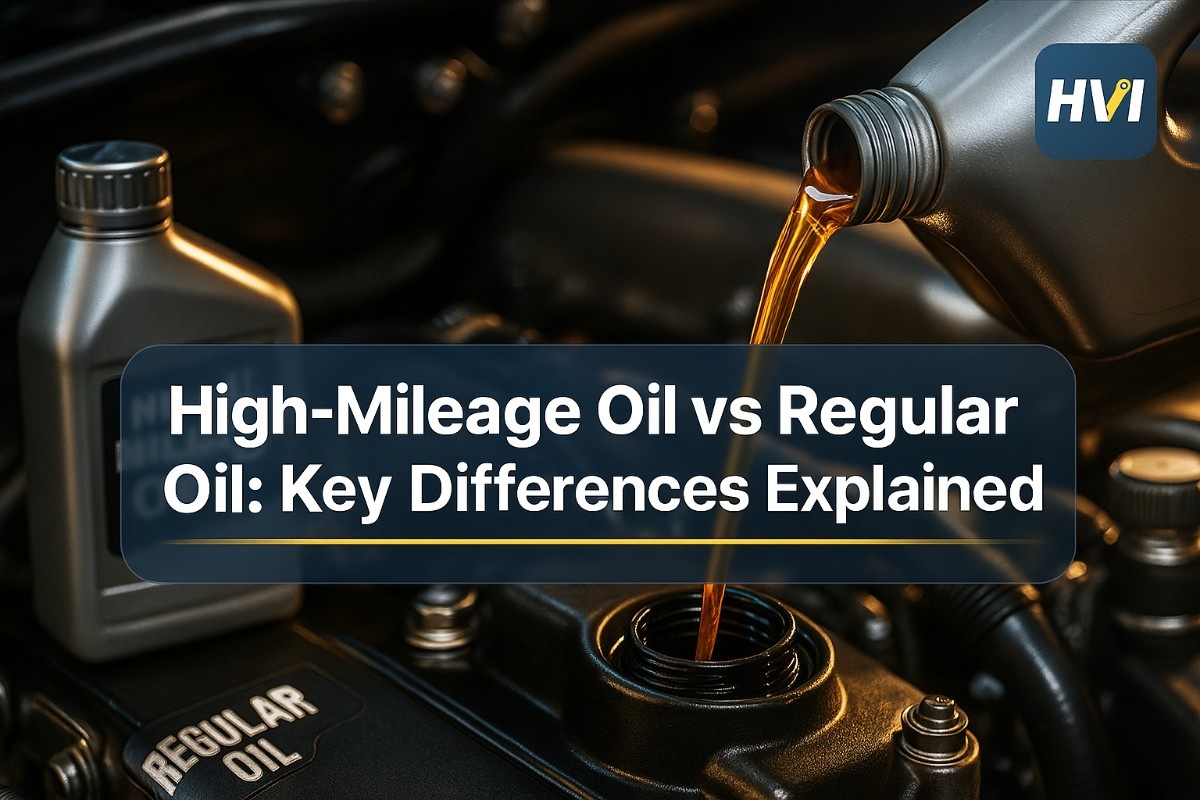The phrase "you can't fix what you can't measure" is pretty common. Whether it's analytics at the office or vehicles used in the field, metrics provide you with insight into what you're doing well and what needs improvement.
Heavy vehicle inspection and maintenance software does just that by collecting operations metrics and organizing processes. When you choose the right software, you can track important metrics and ultimately reduce costs and improve productivity.
What to Look for in Heavy Vehicle Inspection and Maintenance Software:
Real-Time Vehicle Tracking: This involves tracking your vehicles, so you know where they are always, and monitoring the routes they take. This data will help you estimate vehicle ETAs and operating times.
Maintenance Scheduling and Alerts: Manage your vehicle maintenance by scheduling routine maintenance and inspections in advance. Then, you'll receive notifications as to when these actions are required. You can also organize work orders into a priority sequence for your team.
Vehicle Utilization Monitoring: The utilization rate is a ratio that measures the amount of time vehicles are productively being used. It's important to monitor vehicle utilization because it's a main factor in decisions like managing vehicle performance and whether to renew leases or acquire new vehicles.
Integration with Other Business Systems: Integrating inspection and maintenance software with your other operational systems makes business processes more efficient by reducing administrative work. The software can integrate with your ERP, financial systems, and other key platforms.
Data Security and Compliance: Since this software has access to sensitive business and personal information, always ensure that your software is secure and compliant with regulations. The software can also ensure your practices meet the latest vehicle and safety requirements.
Automated Inspection Workflows: Advanced heavy vehicle inspection and maintenance software can automate inspection processes, digitize inspection forms, and streamline the collection of vehicle condition data. This helps ensure consistent, thorough inspections and simplifies record-keeping.
Top 5 Heavy Vehicle Inspection and Maintenance Software Solutions:
Providers like Fleetio, Geotab, and Trimble offer robust software focused on vehicle tracking, maintenance scheduling, utilization analysis, compliance management, and automated inspection workflows. These solutions can help you optimize your fleet operations and make data-driven decisions.
HVI- Heavy Vehicle Inspection & Maintenance Software is a robust platform designed to enhance the efficiency of managing heavy vehicles. It supports various operations such as automatic scheduling, creating work orders, conducting detailed inspections, and managing inventory. Aimed at reducing maintenance costs and eliminating paper use, the software is utilized across industries like transportation and construction, offering a globally trusted solution. Learn More
B2W- Comprehensive fleet management software with modules for tasks such as bidding, inspections, scheduling, and maintenance. It integrates with ERP and accounting systems, offering a variety of automated solutions for fleet management. Learn More
Fleetio- Specializes in tracking and maintaining heavy equipment, focusing on utilization and maintenance workflows. Fleetio helps in cost estimation and integrates with GPS trackers, providing extensive management tools. Learn More
FleetWave- Provides equipment monitoring and maintenance management across various industries. It ensures compliance with regulations and manages licensing and training requirements, enhancing operational consistency. Learn More
GeoTab - Offers telematics solutions tailored for heavy construction equipment. GeoTab's systems provide detailed analytics on driving patterns, fuel usage, and machine idle time, suitable for rugged environments. Learn More
Trimble- Combines fleet management with construction project tools, covering all project stages from design to maintenance. Trimble’s software supports construction modeling, cost estimation, and site tracking. Learn More
Factors to Consider When Choosing the Best Heavy Vehicle Inspection and Maintenance Software:
When selecting a heavy vehicle inspection and maintenance software solution, it's important to evaluate how well the features and capabilities align with your specific fleet requirements. Here are a few key factors to consider:
Business Size and Complexity: Assess the size of your fleet and the complexity of your operations. Larger fleets with more diverse vehicle types may require more advanced software features, while smaller operations may be better served by a more streamlined solution.
Budget and Return on Investment: Like any business software purchase, your budget will be a key factor. Carefully evaluate the pricing models and ensure you can track the return on investment through metrics like reduced maintenance costs and increased vehicle uptime.
Customization and Scalability: Look for software that can be tailored to your unique processes through custom workflows, data fields, and reporting. The solution should also be able to scale as your fleet grows and complex.
Customer Support and Training: The quality of the vendor's onboarding, training, and ongoing support can make or break the success of your software implementation. Thoroughly vet the provider's customer service capabilities.
Integration Capabilities: Evaluate how well the inspection and maintenance software integrates with your other operational systems, such as your ERP, telematics platform, and business intelligence tools. Seamless integration can drive significant efficiency gains.
Regulatory Compliance: Ensure the software has features to help you maintain compliance with the latest vehicle inspection, maintenance, and safety regulations relevant to your industry.
Ease of Use and Accessibility: Software that is user-friendly and accessible is designed to be easy to understand and use, making it simpler for users to adopt and consistently utilize.
By carefully considering these factors, you can identify a heavy vehicle inspection and maintenance software solution that meets your unique operational needs and delivers lasting value to your organization.
Driving Success with Heavy Vehicle Inspection and Maintenance Software:
Implementing a robust heavy vehicle inspection and maintenance solution is a journey, but one that can unlock incredible operational improvements for your fleet. Let's explore the key steps to ensuring a smooth and successful implementation.
Planning the Route Ahead
The first phase is all about mapping out your destination. Start by clearly identifying your fleet's core needs and pain points. Research various software providers, reading reviews and customer testimonials to understand how their offerings align with your requirements. Determine your budget, the number of users who will need access, and the size of your fleet. Most importantly, get your team on board early by communicating the upcoming changes.
Equipping Your Crew
With the planning complete, it's time to hit the gas on employee training and adaptation. Leverage all the onboarding resources provided by your software vendor. Attend training sessions and cascade that knowledge to every team member who will be using the new system. Keep the lines of communication open, providing support and soliciting feedback as your team gets up to speed.
Monitoring for Continuous Improvement
The final step is all about keeping a close eye on your fleet's performance. Establish baseline metrics for maintenance, usage, costs, and other key indicators before implementation. Then, dive into the data in your new software, analyzing trends and adjusting to optimize your processes. Most importantly, compare your post-implementation metrics to those baselines - this is how you'll prove the true return on your software investment.
By carefully navigating these three phases - planning, training, and monitoring - you can ensure your heavy vehicle inspection and maintenance software delivers lasting value across your fleet operations. Stay the course, and you'll be well on your way to running a more efficient, cost-effective, and compliant vehicle fleet.
Implementing Vehicle Inspection and Maintenance Software
The implementation process involves planning, training employees, and continuous monitoring. Key steps include identifying your needs, evaluating software options, training users, and analyzing performance metrics after deployment.
By tracking maintenance, utilization, costs, and other processes, heavy vehicle inspection and maintenance software provides the visibility you need to improve fleet operations. Look for solutions that align with your specific requirements and can integrate with your other business systems.
Ready to optimize your construction fleet management? Take the first step towards streamlined operations and improved cost efficiency. Click here to learn more about our fleet management software solutions and begin your journey to smarter, data-driven decision-making. Don't wait, transform your fleet operations today!
FAQ’S You should know:
Q1. What is heavy vehicle inspection and maintenance software?
Heavy vehicle inspection and maintenance software is a digital tool designed to streamline the management of fleet operations, including scheduling, tracking, and performing vehicle inspections and maintenance.
Q2. How can this software improve fleet operations?
The software helps by automating key processes such as maintenance scheduling, vehicle tracking, and data analysis, which can lead to reduced operational costs and enhanced productivity.
Q3. What features should I look for in fleet management software?
Key features include real-time vehicle tracking, automated maintenance alerts, vehicle utilization monitoring, integration capabilities with other business systems, and robust data security and compliance measures.
Q4. Is it worth investing in fleet management software for a small fleet?
Yes, even small fleets can benefit significantly from fleet management software through improved scheduling, reduced downtime, and better compliance with regulations.
Q5. How do I choose the right software for my fleet?
Consider factors such as the size and complexity of your fleet, budget constraints, software scalability, integration with existing systems, and the level of customer support offered by the provider.
Q6. Can fleet management software help with regulatory compliance?
Yes, many fleet management software solutions include features to help ensure that fleets meet current vehicle inspection and maintenance regulations.
Q7. What are the steps to implement fleet management software?
Implementation typically involves planning and preparing, training employees, and continuous monitoring and adjustment based on performance data analysis.




